|
|
About Colored Pencils
|
Colored pencils are made with the same fine pigments as oil and watercolor paints but the pigments are mixed with a binder and the product is formed into a pencil shape. A "traditional" colored pencil consists of pigment mixed with a wax binder surrounded by a wood casing, but colored pencils are manufactured with a variety of binders and can have a plastic casing, no casing at all, or can be produced in a stick form. |
Surfaces For Colored Pencils
Examples of Colored Pencil on Different Surfaces: |
|||
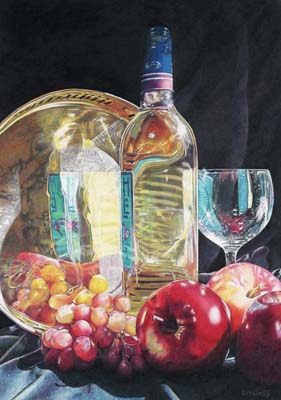
|
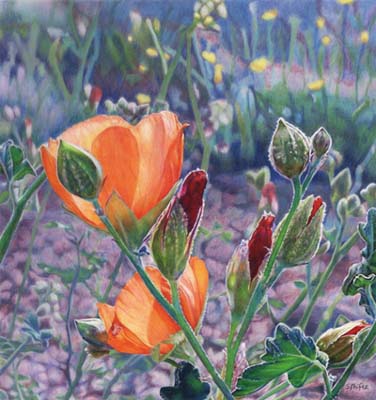
|

|
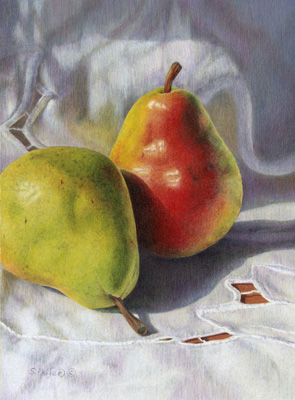
|
|
Bristol Vellum |
Mylar |
Suede Mat Board |
Sanded Paper |
|
Colored pencils are amazingly versatile and can be used on a variety of surfaces, as long as the surface has adequate "tooth" for the pencil to stick to. Generally, the more "tooth" the surface has, the more layers of pencil it will accept. To insure that your artwork will last, always choose an archival (acid free) surface or prepare the surface with a gesso or acid-free workable fixative. |
Applying Colored Pencil
|
A huge range of effects can be created depending on the manner in which colored pencil is applied. Different strokes can be used (cross-hatching, circular, scrumbling, directional, etc.). The pencil can be applied very lightly or with firm pressure. It can be blended or unblended and applied in one or two layers or built up with dozens of layers. Colored pencil can be applied dry or used with a solvent. Gamsol or other solvents can be used with wax and oil based pencils and water can be used with water-soluble pencils. Colored pencil can be applied to heated surfaces. Stumps, trimmed brushes, fingers, tissues, and other tools can be used to blend and manipulate colored pencil and special effects can be obtained using a stylus, x-acto knife and other sharp objects. |
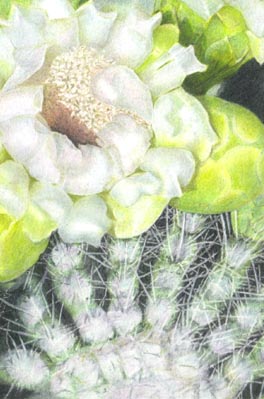
|
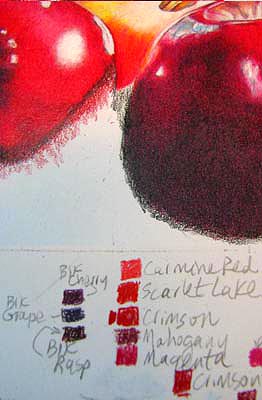
|
|
Cactus spikes created using an x-acto knife |
Actual color test swatches from a colored pencil |
Graphite Under Colored Pencil
|
Because colored pencil is transparent, it is important that your underlying sketch not be too dark or it may "show throw" your finished piece, particularly under light colors. Graphite, either from a sketching pencil or from transfer paper, can sometimes smudge and possibly "muddy" light colored pencil so consider gently using a kneaded eraser to lighten all graphite lines as much as possible before you begin working on the light areas of your painting. For details about using transfer paper, please view the lesson "Using Transfer Paper".
|
Framing and Preserving
|
Wax Bloom: |
| Site Design by Sandy Phifer |
|
All images, web pages, and texts are protected under US and International copyright laws, and are the personal property of Sandy Phifer. |
